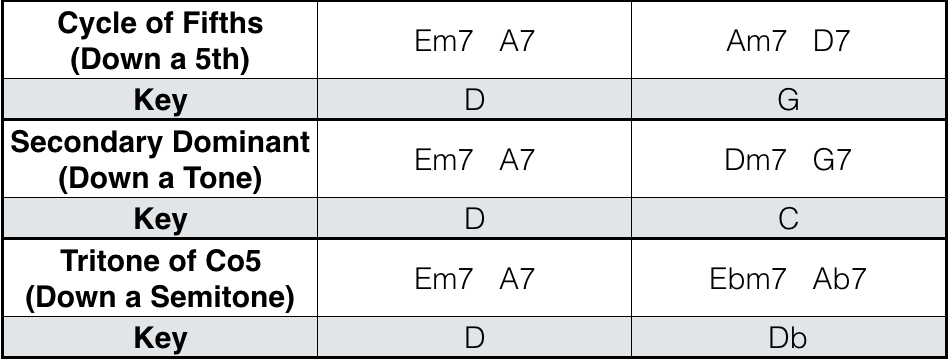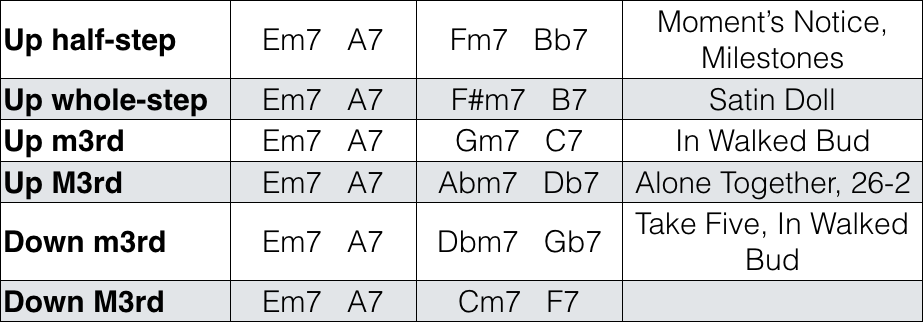ii-V Chains
Non-resolving ii-V chains usually resolve downwards either by half step, whole step or through the Circle of Fifths.

These sound strong and functional because the key change follows the Circle of Fifths (D to G), or is follows the Circle of Fifths but with a tritone substitution of the destination key (D to Db – where Db = tritone substitution of G), or acts as a secondary dominant (A7 to Dm7) tonicising a diatonic chord (D to C).
Functional harmony sounds like it is moving towards an ultimate end point, that is the tonic chord. Like the following chord progression:
Em7 A7 | Dm7 G7 | ??? ||
Our ear expects a final CMaj7 chord.
Contiguous ii-V’s
Contiguous ii-V’s are ii-V chains that do NOT move in one of the above manners. Instead they resolve upwards by a half step, whole step, Maj3rd or min3rd or downwards by a Maj3rd or min3rd. As such, they are non-functional.

Contiguous ii-Vs are used relatively often in Jazz. They add a kind of anticipation or expectation to the chord progression. The ii-Vs sound like they are building up to something, but because they do so in a non-functional way – that is, without implying a tonic chord – you don’t quite know what that something is. They are used to delay the final resolution and thus give a sense of relief once they finally do reach some kind of tonic chord. For example take the following chord progression:
Cm7 F7 | Dm7 G7 | Em7 A7 | F#m7 B7 | Gm7 C7 | Am7 D7 | GMaj7 ||
The above chord progression feels like it’s building up to something but you don’t know where it is going to end, until it does. This is because we are moving through each ii-V quickly, without resolving to a I chord. Consequently, this is not ‘true’ modulation. We are not really fully changing key here. Instead we are only implying or suggesting a new key each bar without settling into it – and this is called tonicisation rather than modulation. In a sense, you can think of this progression as a whole bunch of passing chords on the way to a ii-V-I in G.
So keep an eye out for these contiguous ii-V’s next time you’re playing a Jazz Standard. And maybe increase the intensity of your improvisation as you go up these contiguous ii-V’s – by playing faster or louder – to match the increasing anticipation that the contiguous ii-V’s are building. Then at the final resolution, you can hit and hold a guide tone and completely resolve the tension you have built.